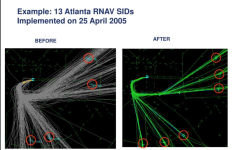My question has to do with 5-8-3. Is the 10 degrees for RNAV SID departures still allowed even if the controller has to issue a heading initially? If so, what makes the initial controller assigned heading for this so special compared to every non RNAV SID that requires 15 degrees?
The reference simply says:
5-8-3 c. When both aircraft are flying an RNAV SID: 1. Between successive departures from the same runway– 1 mile if courses diverge by 10 degrees or more immediately after departure. (See FIG 5−8−1.)
The reference simply says:
5-8-3 c. When both aircraft are flying an RNAV SID: 1. Between successive departures from the same runway– 1 mile if courses diverge by 10 degrees or more immediately after departure. (See FIG 5−8−1.)

